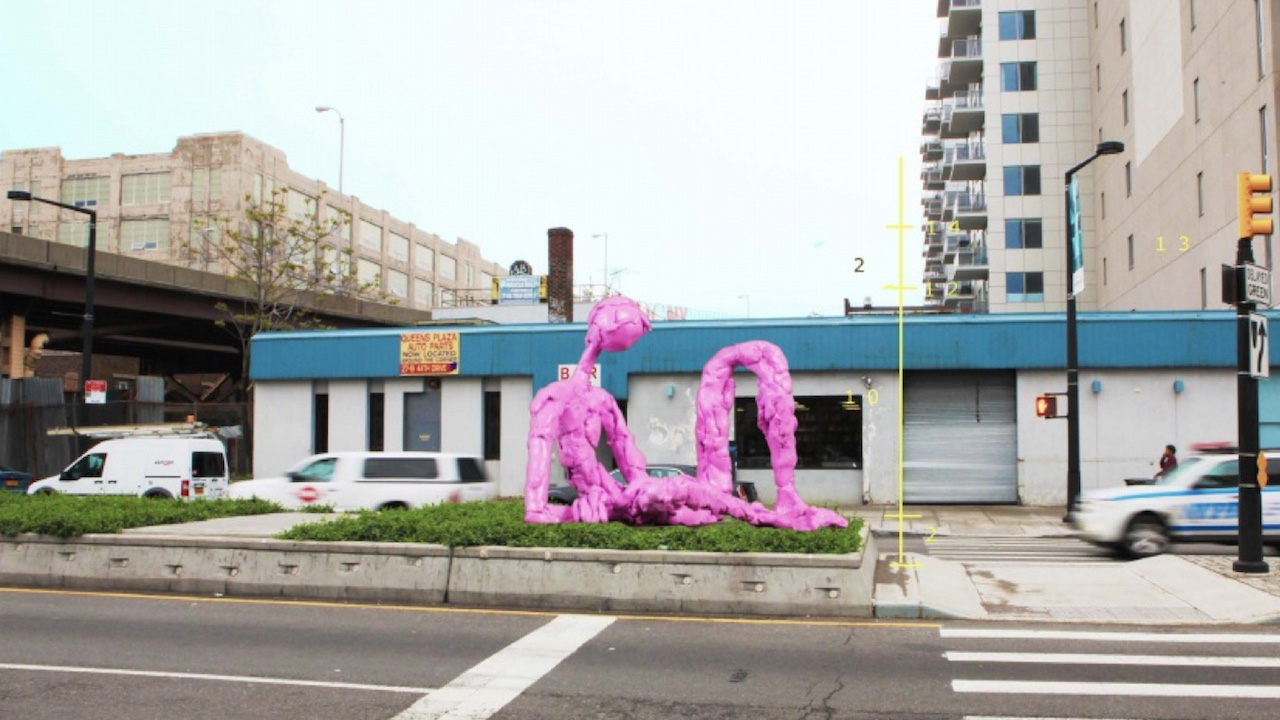Last week, the City Council passed a bill that will require a hearing before some works of public art are installed. The bill, which was drafted as a response to public outcry over The Sunbather, a sculpture created by artist Ohad Meromi that’s slated to be installed next year on a traffic median on Jackson Avenue in Queens. If Mayor de Blasio signs this bill into law, it will set a dangerous precedent for allowing the city to censor public art. Here’s a list of controversial public art pieces that, if this bill had existed before they went up, New York would have never seen.
1. Tilted Arc, Richard Serra, 1981

Photo: Wikipedia
Tilted Arc was a huge sculpture made of raw steel, 120-feet long and 12-feet high, that was installed in Lower Manhattan’s Federal Plaza from 1981 to 1989. It was created by Richard Serra, one of America’s greatest living sculptors, known for his monolithic metal works. Tilted Arc was New York’s public Serra. But people who worked at Federal Plaza complained that the sculpture was inconvenient, forcing them to walk around it. Which Serra said was the point: “The viewer becomes aware of himself and of his movement through the plaza. As he moves, the sculpture changes,” he said at the time. “Step by step the perception not only of the sculpture but of the entire environment changes.” But the whiners were eventually victorious, and the sculpture was chopped up and scrapped in 1989. “I don’t think it is the function of art to be pleasing,” Serra said. “Art is not democratic. It is not for the people.” Serra is hardcore, and this quote sort of sums up what this bill could remove: challenging, provocative art that forces people to think.
2. Civic Virtue, Frederick MacMonnies, 1922
 Photo: Peter Roan
Photo: Peter Roan
Civic Virtue has been controversial since it was unveiled at City Hall almost a century ago. It depicts a warrior, representing moral government, standing on two women, meant to represent vice and corruption. Even in 1922, this was problematic. It’s since been shuttled to Queens Borough Hall and Greenwood Cemetery, where it currently lives. Disgraced Congressman Anthony Weiner once suggested the city sell it on Craigslist.
3. Crack Is Wack, Keith Haring, 1986
 Photo: Stan Weichers
Photo: Stan Weichers
New York City’s most famous mural began as an unsanctioned piece. Haring was even arrested the day he painted it. It was painted over, but then Haring was allowed to put it back up. It became the symbol of the crack epidemic that gripped the country in the 1980s and one of the most beloved and iconic pieces of public art in the world. This bill would have left it painted over, because somebody would have objected to having to contemplate crack while cruising down the FDR.
4. Eat My Fear, David Lynch, 2000
 Photo: Troy Tolley
Photo: Troy Tolley
Everyone with a modicum of taste knows David Lynch is a true artistic genius, but according to former Parks Commissioner Henry J. Stern, who banished Lynch’s contribution from 2000’s Cow Parade, he’s basically Charles Manson: “I don’t know whether it’s shock art or schlock art,” he told the Times. “David Lynch should stick to his day job, making movies.” This one actually did get censored, depriving the city of an artist whom even the philistines of Los Angeles love.
5. The Gates, Christo and Jean-Claude, 2005

Photo: DanielCon
The Gates was one of the most ambitious and spectacular public art projects in New York City history. Thousands of tons of steel, over a million square feet of nylon, and 23 miles of Central Park were used in for project the project’s 7,503 gates, which turned the park into an enchanted forest for two weeks. This bill may have turned this project down, because it would have been too expensive and too much of a nuisance for people like Keith Olbermann, who didn’t want to look out his apartment window and see them.
(Image: Ohad Meromi)


